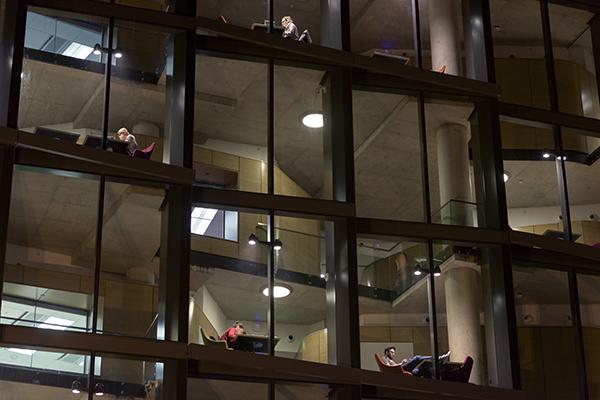Between selfies and brunch photos on Instagram, look out for advertisements from the public health school.
The Milken Institute School of Public Health has been sponsoring Instagram ads for about a month with the intention of recruiting students, the school’s communications director said. The Instagram ads are just the most recent example of GW schools increasing their marketing online, and experts say they are one of many other universities that are turning to social media.
Recent ads have included photos of campus and a student on a farm with children. Some of the ads include pictures of GW’s campus or public health students doing field research. Captions on the photos encourage students to “change the world” by applying to start a master’s degree in public health.
Stacey DiLorenzo, the executive director of communication for the public health school, said the school has been testing advertising on Instagram since January and hopes to use social networking to go to the sources where young people are already spending their time.
“Individuals spend a good portion of their day using social networking services such as Instagram, so it makes sense for us to try to engage with prospective and current students where they are spending their time,” DiLorenzo said in an email.
She added that the public health school also advertises to students on other social media platforms including Facebook and LinkedIn. On Instagram, staff in the school can use pictures to showcase GW’s unique opportunities, DiLorenzo said.
DiLorenzo declined to comment on how much the ads cost, and said advertising costs vary based on the advertisement and its audience. She did not say how the school is measuring the impact of Instagram marketing.
Other GW schools have also recently used social media for advertising. Last year the Columbian College of Arts and Sciences turned to Spotify for graduate student recruitment, which came after a downturn in graduate enrollment the year before.
GW’s official Instagram account also reposts students’ posts to draw potential students to apply.
Randy Hlavac, a lecturer of social marketing at Northwestern University, said that a fundamental part of quality outreach is choosing the right medium for the right population.
“If you are a university, your prospective students would be much more drawn to a video than reading something,” Hlavac said. “They will listen to podcasts and want to meet with members of the University because this is how students interact today.”
Hlavac said universities will advertise differently to prospective students than to their parents, so social media is more effective than a tactic like mailed brochures to attract prospective students.
“For students, it is about gauging the lifestyle. For parents, it is about dollars and cents. To the student, it is an emotional decision. To the parent, it is a financial one,” Hlavac said.
Amee McDonald, an adjunct lecturer of marketing at the University of Minnesota, said Instagram has become a go-to place to advertise for young people because it blends advertisements in with content users choose to look at.
“Instagram is one of the hottest social media tools right now because it is building brands,” McDonald said.
Still, she added that it may be more difficult for students to follow through because advertisements cannot link to a website or application, so Instagram is typically solely used to put an idea in users’ heads.








